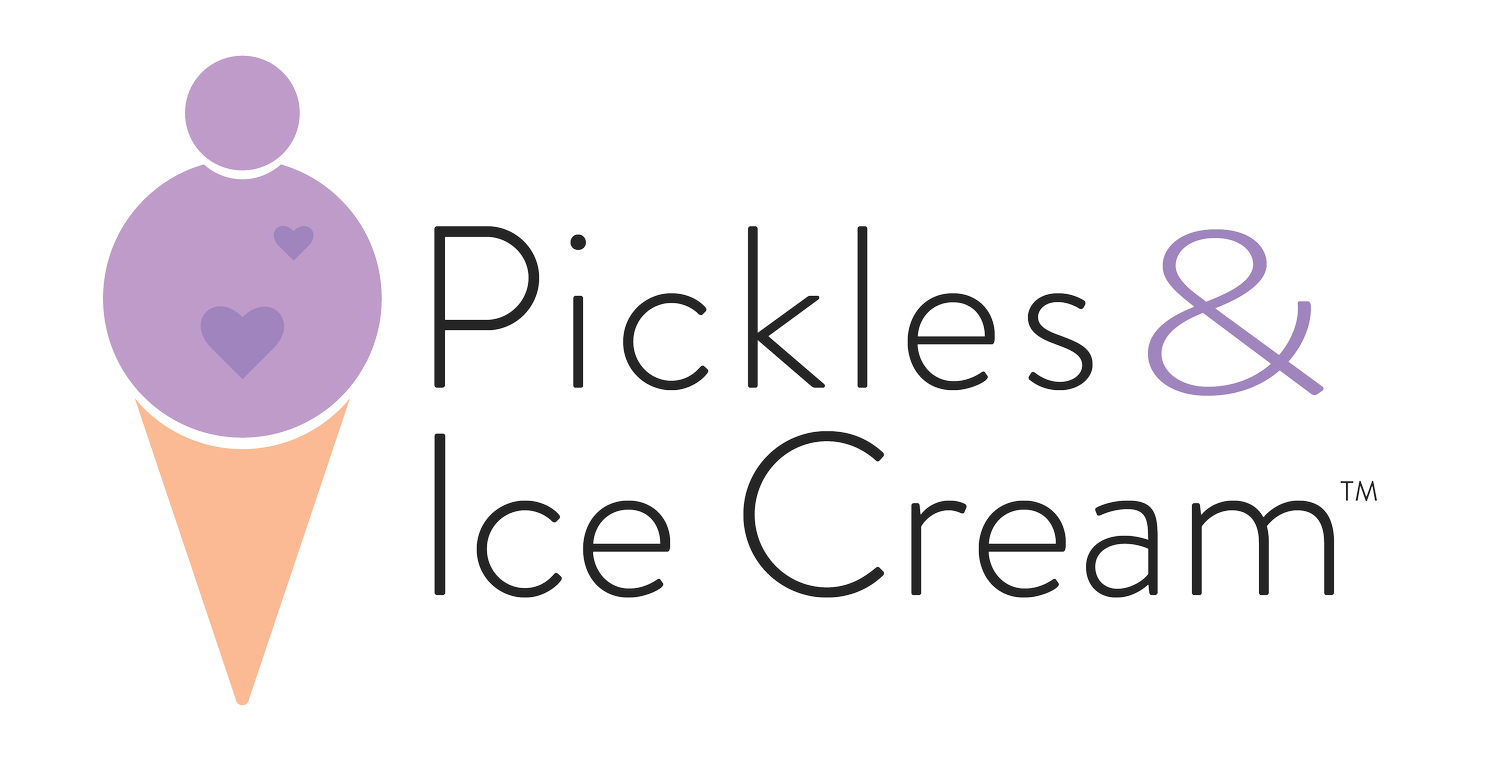Pregnancy Trimesters: At a Glance
➝ From the first positive test to the birth of your baby, your body is going through a lot of changes!
➝ Stay aware of all the changes and seek support or help when you need it.
➝ Check out our gallery for a quick look at the stages/trimesters of pregnancy!
How long does a pregnancy last? What is a trimester? When should I call my provider? Pickles & Ice Cream Georgia® has the answers!
If you are pregnant, you might find yourself asking questions like these. The stages of pregnancy and the symptoms that you experience along the way can sometimes be confusing, especially because every pregnancy is different!
You may think that pregnancy begins when a test reads positive; in actuality, pregnancy is measured starting on the first day of your last normal menstrual period. Yes, that means the measurement begins before you’re actually pregnant!
This measurement, called gestational age, indicates how far along a pregnancy is. Pregnancy typically lasts 40 weeks, but anywhere between 38 and 42 weeks is considered normal.
These weeks are divided into three stages called trimesters, which are roughly three months each. It’s important to know what symptoms to expect in each trimester so that you can monitor the health of you and your baby. Check out the gallery for a breakdown of the pregnancy trimesters!
Resources For You
Learn more about this and other prenatal topics by registering for our FREE Online Classes!
Checkout our blog posts for more info on Mental Health, P.O.S.T.B.I.R.T.H Warning Signs, and Postpartum Care!
Connect with healthcare providers: Georgia Family Healthline (1-800-300-9003)
Health and nutrition support for postpartum women, breastfeeding mothers, infants, and children: Georgia WIC (contact info for your Georgia county can be found here)
Maternal mental health support: Postpartum Support International (contact info for your Georgia county can be found here)
24/7 hotline for mental health services: Georgia Crisis & Access Line (1-800-715-4225)
References





